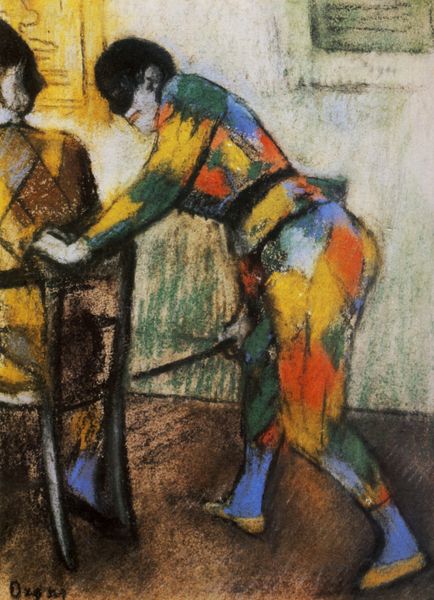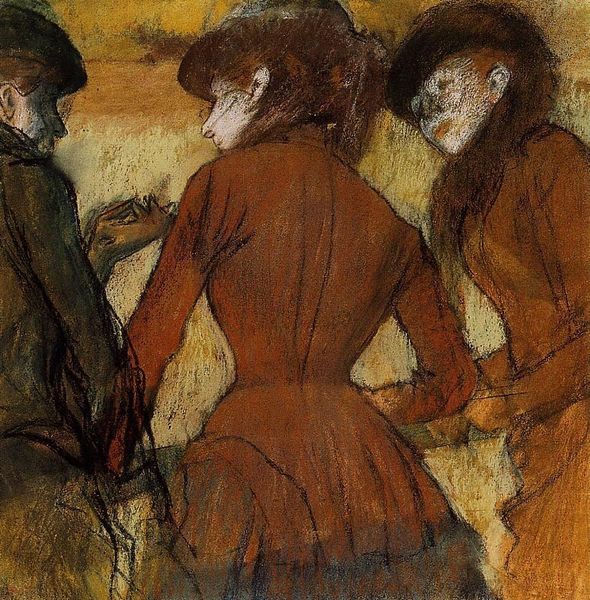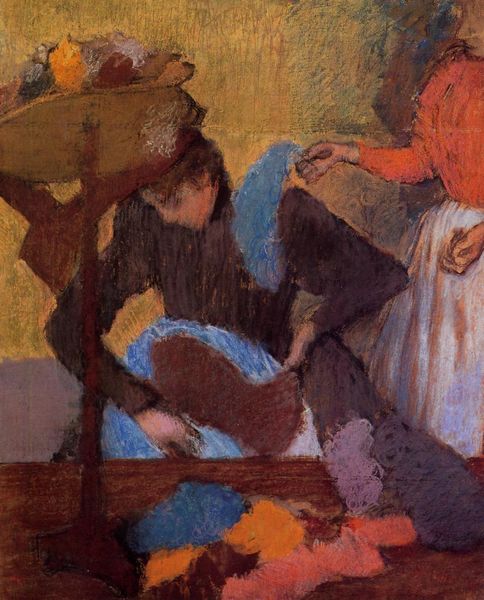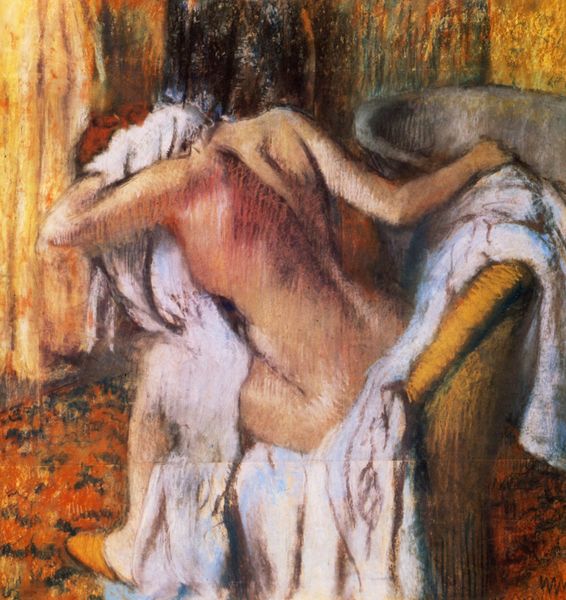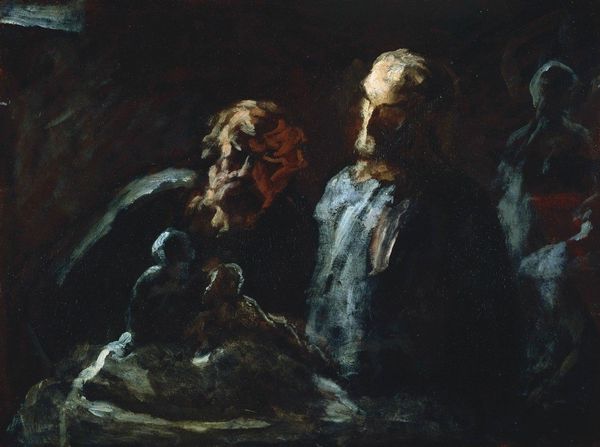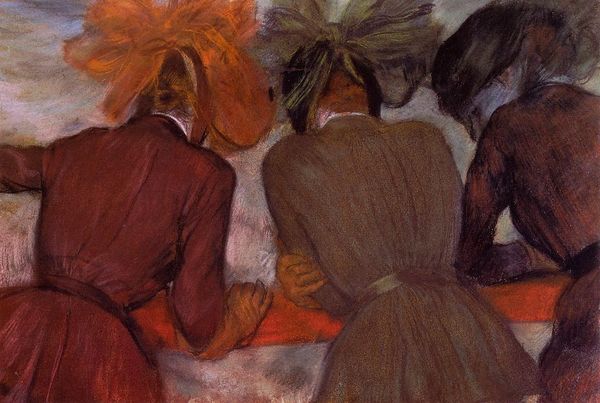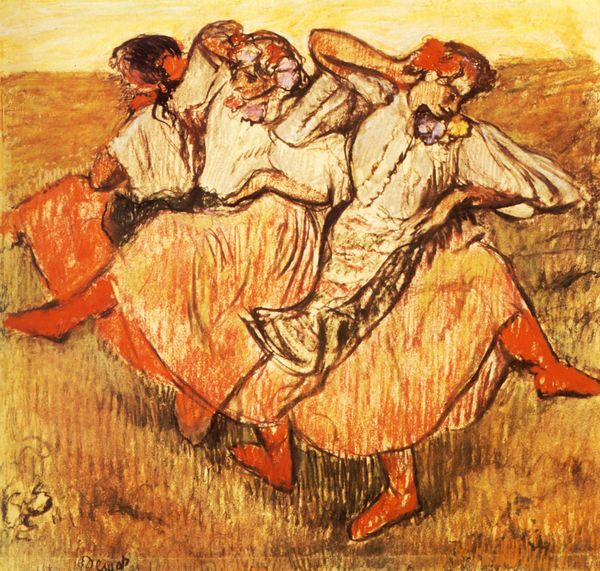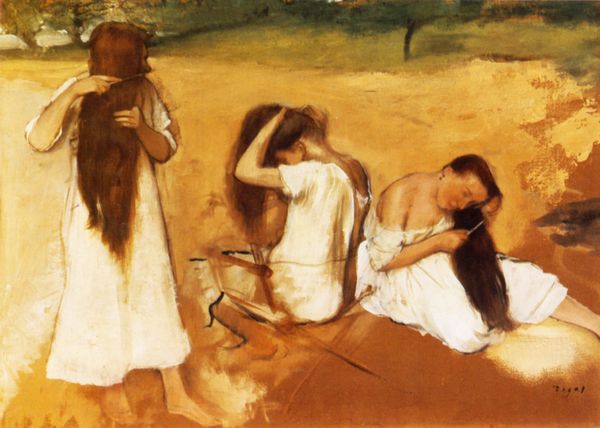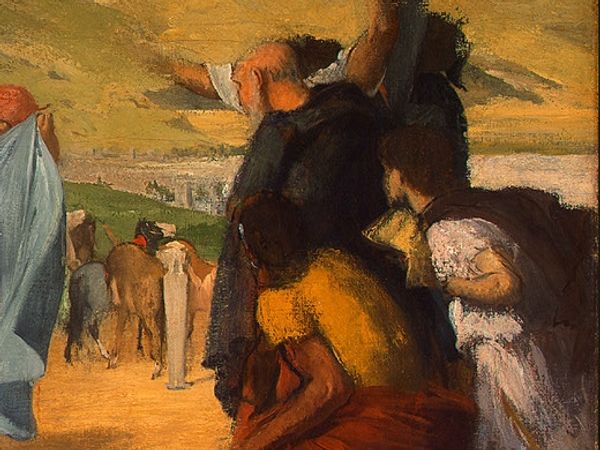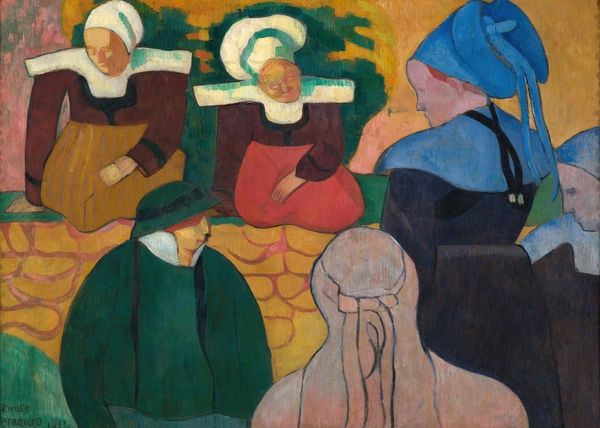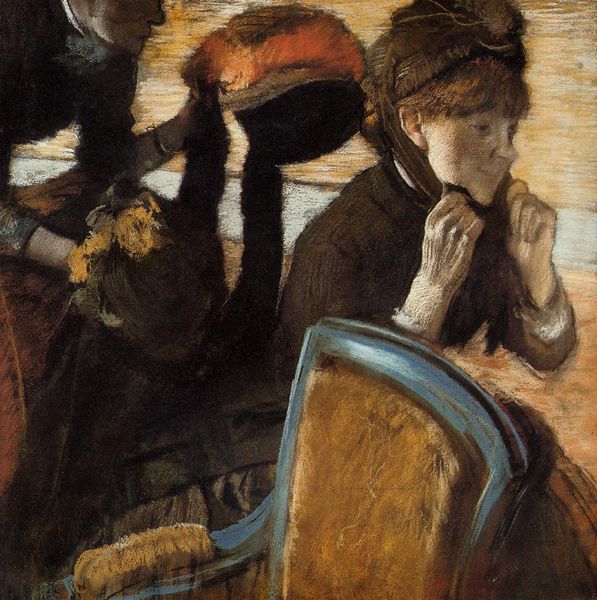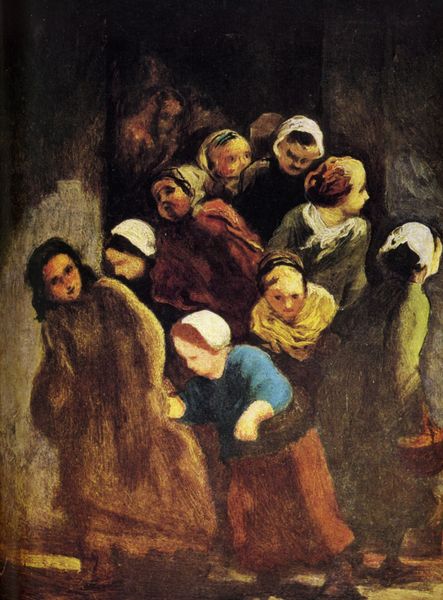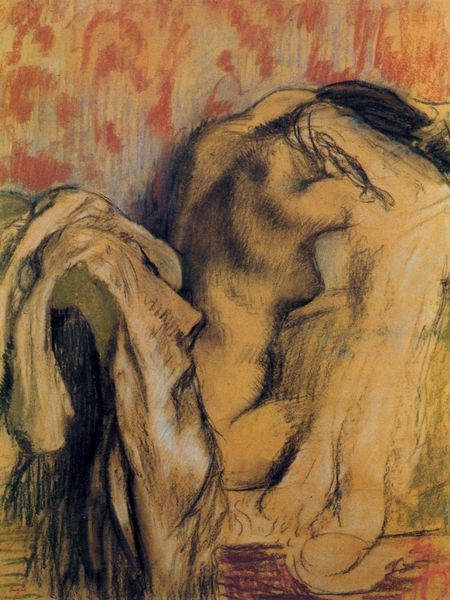
painting, oil-paint
#
painting
#
impressionism
#
oil-paint
#
figuration
#
oil painting
#
genre-painting
#
realism
Dimensions: 46 x 61 cm
Copyright: Public domain
Editor: Here we have Edgar Degas's 1878 oil painting, "Laundresses Carrying Linen in Town." The thick brushstrokes give the scene a feeling of immediacy. I'm struck by how weighty the laundry seems, almost a physical manifestation of labor. What stands out to you in this work? Curator: I'm interested in the materials and processes embedded in this piece, and how Degas challenges artistic conventions by representing working-class women. Think about the social context: what does it mean to depict the industrial labor of laundresses, traditionally unseen, in a high-art format like painting? Editor: So, beyond the surface, we're really looking at how labor becomes a subject worth representing? Curator: Exactly. Consider the materiality of the paint itself. The visible brushstrokes and ochre color palette suggest not only the physical work but the conditions of it – the heat, the grime, the toll on the body. It elevates craft and labour, turning it into art. How might this impact our understanding of value in art? Editor: It definitely makes you rethink what’s traditionally considered beautiful or worthy of artistic representation. By focusing on labor, Degas seems to be questioning the art world’s existing value system. Curator: Precisely. Degas prompts us to question not just what we see, but *how* and *why* we value it, in both art and society. Editor: I now see "Laundresses Carrying Linen in Town" less as just an image and more as a statement about the overlooked labor that shapes our society. Curator: Absolutely, recognizing labor, consumption and production is important to appreciating what art has to say about lived reality.
Comments
No comments
Be the first to comment and join the conversation on the ultimate creative platform.
